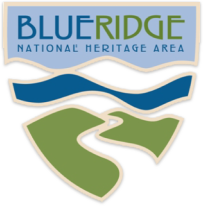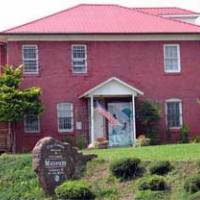
Hewing a legacy in native wood over the generations
The Brasstown Carvers can trace their start to 1929 when a local Handicraft Association was organized at the John C. Campbell Folk School. With dues set at 50 cents per year, association members produced hearth brooms, quilts, benches, and baskets for sale. All work was made in the homes of members who lived around Brasstown. An immediate success, the program was one of several cooperatives formed in partnership with the John C. Campbell Folk School during the 1920s and 1930s. Another was the Mountain Valley Creamery, located in a building made of local stone that today houses the Highlander Gallery.
In 1931, the Folk School began hosting a twice-a-week carving night. The Brasstown Carvers—although they did not yet go by that name—produced consistently throughout the 1930s and 1940s. They came together on Saturday mornings to share their work, to practice, and learn new things. The Hall family walked eight miles from Warne to attend these meetings.
At these weekly get-togethers, carvers could pick up rough-sawn blocks of wood from apple, cherry, black walnut, holly, maple, sycamore, and birch. These were taken home and carved with a pocketknife and returned to the school for a final polishing and marketing. The school developed a twin system of craft instruction. Its “industries” department was aimed at students enrolled in its residential program, while its craft cooperative reached into the community. While the two programs remained somewhat separate, their goals and methods intertwined. A 1931 school report acknowledged the value of the community handicraft cooperative as a “growing link between school and community.” Several other schools adopted this model, including Penland School of Craft near Spruce Pine, N.C.
In 1933 an exhibition of Mountain Handicrafts brought the work of the Brasstown carvers to the nation’s capital. The catalog listed carved geese, both “mad” and “sober” mules, horse, oxen, hog, rabbit, dog, goat, and a full logging outfit. Brasstown carvings caught the attention of the President and First Lady Roosevelt. A Washington DC newspaper reported that Eleanor Roosevelt visited the exhibition six times and bought “a whole flock of geese.”
While carving was initially considered to be an occupation for men and boys, women entered the cooperative in increasing numbers, especially during World War II as men left for military service. By 1946, women were the majority of carvers for the first time with 33 women and 18 men carving. Since that time, and into the present, both men and women participate. In the 1950s, the carving group formally became known as the Brasstown Carvers and continued to produce small, hand-held animals and nativity figures for more than another half-century.









